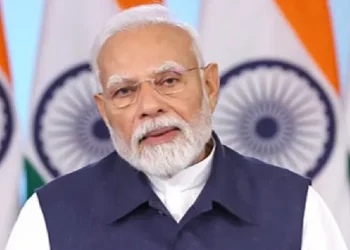A 15-fold increase in spot liquefied natural gas (LNG) prices over the past year could hurt its imports and consumption, as well as India’s progress towards becoming a gas economy, according to industry players and analysts.
Asia-delivered spot LNG prices have risen to $30 per mmBtu (million metric British thermal unit) from under $2 per mmBtu in May 2020. With winters setting in and demand for natural gas on the rise globally, analysts expect spot LNG prices to climb further to $40 per mmBtu by December. In comparison, LNG procured through long-term contracts cost around $9-10 per mmBtu.
Domestic Gas
“We see refineries, power companies, MSMEs and steel companies getting impacted with the record high prices. While some may switch to liquid and alternative fuels, our growth and plans of adopting LNG as a clean fuel will get impacted,” the chief executive of a city gas distribution company said on condition of anonymity.
Being a net gas importer and with domestic gas prices linked to the Henry Hub and Japan Korea Marker Spot LNG prices, which are widely used as a benchmark in the global spot market, India faces a direct impact from this sharp increase.
On 1 October, India revised domestic gas prices to $2.9 per mmBtu. Though this augurs well for upstream companies such as state-run Oil and Natural Gas Corporation (ONGC) and Oil India, gas utilities and city gas distribution (CGD) companies could face challenges from the impact on demand and passing through of rising gas costs.
Mumbai-based Mahanagar Gas Ltd (MGL) increased compressed natural gas (CNG) prices by ₹2 per kg to ₹54.57 per kg and that of cooking gas by ₹2 per standard cubic metres (scm) to ₹32.67 per scm.
A Significant Increase in The Cost of Gas
“The selling price of domestically produced natural gas has been increased by 62% by the government with effect from 1 October. Further, re-gasified LNG prices are at historically high levels. This combination has resulted in a significant increase in the cost of gas being procured by MGL,” MGL said on 5 October.
Analysts expect higher LNG prices to impact demand. “We reduce India’s gas demand estimates by 4%/3% for FY22/23E and reduce our gas transmission/LNG import volumes,” said UBS Research in a 1 October report.
Gujarat Gas has raised prices by 40% since January compared with a 12% increase by manufacturers in the industrial cluster of Morbi.
Gas Economy
In the first half of FY22, India’s domestic gas output increased 21% to 89 mmcmd from fields such as Reliance KG basin and Vedanta Rajasthan, protecting gas transmission volumes and improving mix of domestic gas for Gail and Gujarat State Petronet Ltd.
“Near-term growth would be missing due to lower LNG imports. For Petronet LNG, lower spot volumes would result in lower utilization, though a sharper decline in utilization would be safeguarded with long-term/use-or-pay contracts. Some of the other terminals are facing a sharp decline in utilization,” UBS said in its report.
India plans to increase the share of natural gas in its energy mix to 15% by 2030 from the current 6%.
While CGD companies are planning to set up mobile refueling units in the next year to meet the increasing demand for CNG, gas marketing firms are targeting to build LNG fuel stations. These plans, company officials said, could face a setback in the near term.
(Economy India)












